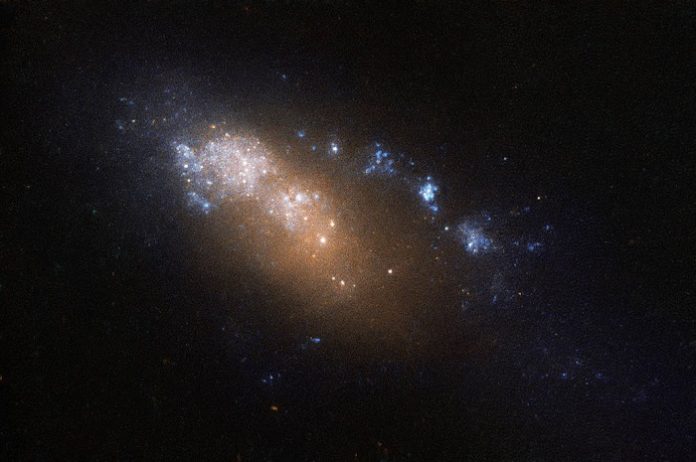
Have you ever heard of the galaxy NGC 178? It may be small, but it sure is mighty!
At only around 40,000 light-years across, it’s less than half the size of our own galaxy, the Milky Way, earning it the nickname of a dwarf galaxy.
Don’t let its size fool you though! Despite being small, NGC 178 is a beehive of activity, continually churning out new stars.
On average, it forms new stars that add up to about half the mass of our Sun each year. This incredible rate of star production is so impressive that scientists call it a starburst galaxy.
But the story of NGC 178’s discovery is as fascinating as the galaxy itself. It’s a tale of mistaken identities and astronomical detective work. Back in 1885, an American astronomer named Ormond Stone first discovered this galaxy and named it NGC 178.
However, he made an error while noting down its position in the sky, especially its right ascension (a term astronomers use similar to longitude on Earth), and the recorded location was way off.
Years later, the galaxy was spotted again by a French astronomer, Stéphane Javelle. He didn’t find any recorded galaxy at that location in the sky, so he thought he’d discovered a brand new galaxy! Excited, he added it to the expanded Index Catalog as IC 39.
Meanwhile, American astronomer Herbert Howe also observed the same object and corrected Stone’s original mistake with the location.
It took many more years for astronomers to realize that NGC 178 and IC 39 were not two different galaxies, but the same object seen and named differently due to an initial mistake!
This image of NGC 178 that we now have is thanks to the Wide Field Planetary Camera 2 on board the NASA/ESA Hubble Space Telescope.
So, the next time you look up at the stars, remember the curious tale of NGC 178, a tiny galaxy with a big personality and an even bigger story!



